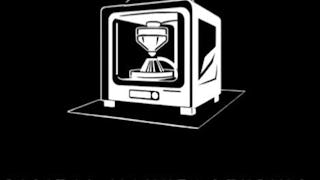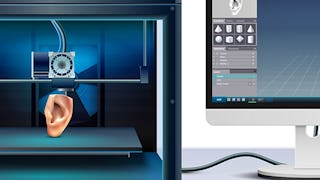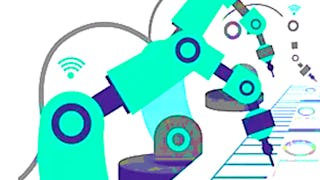In this course, learners will be introduced to the fundamental concepts of computer-aided manufacturing and its implementation through open-source software. The course involves topics related to Computer-Aided Manufacturing (CAM), Computer-Aided Process Planning (CAPP), Essentials of CNC machines and Robotic Arms, NC programming, and Toolpath generation through open-source software and CAD/CAM tools PowerShape and PowerMill.



Elements of Computer Aided Manufacturing
Ce cours fait partie de Spécialisation Digital Manufacturing

Instructeur : Sajan Kapil
Inclus avec 
Expérience recommandée
Détails à connaître

Ajouter à votre profil LinkedIn
mars 2025
18 devoirs
Découvrez comment les employés des entreprises prestigieuses maîtrisent des compétences recherchées

Élaborez votre expertise du sujet
- Apprenez de nouveaux concepts auprès d'experts du secteur
- Acquérez une compréhension de base d'un sujet ou d'un outil
- Développez des compétences professionnelles avec des projets pratiques
- Obtenez un certificat professionnel partageable


Obtenez un certificat professionnel
Ajoutez cette qualification à votre profil LinkedIn ou à votre CV
Partagez-le sur les réseaux sociaux et dans votre évaluation de performance

Il y a 7 modules dans ce cours
In this course, learners will be introduced to the fundamental concepts of computer-aided manufacturing and its implementation through open-source software. The course involves topics related to the Computer-Aided Manufacturing (CAM), Computer-Aided Process Planning (CAPP), Essentials of CNC machines and Robotic Arms, NC programming, and Toolpath generation through open-source software and CAD/CAM tool PowerShape and PowerMill.
Inclus
3 lectures1 sujet de discussion
In this module, a brief overview of Computer Aided Manufacturing has been provided. The students will be able to understand the need of CAD/CAM into the present smart manufacturing society. This module highlights different computer aided process planning strategies and their advantages over traditional process planning methods. By the end of this module, the user will be able to generate a process plan for additive as well as subtractive manufacturing process of any given part.
Inclus
16 vidéos5 lectures3 devoirs
This module will introduce the different essential elements of CNC machines and industrial robots with their architecture. Furthermore, the present module provides the detailed information regarding the types, application, benefits of the different type of CNC milling and Robot. This will help to understand the basic concept regarding the working principle of a CNC machine or a Robot. Moreover, the demonstration of different CNC machine and Robot will provide the operational knowledge.
Inclus
35 vidéos2 lectures3 devoirs
The part program is a sequence of instructions, which describe the work, which has to be done on a part, in the form required by a computer under the control of computer numerical control (CNC) software. The present module will provide the basic concepts behind the generation of NC code for CNC machine or Industrial Robot. It also includes the demonstration of preparing a program sheet from a drawing sheet.
Inclus
19 vidéos3 lectures4 devoirs
Demonstrate understanding of the use and programming of different CNC machine. Furthermore, the present module will provide the detail on the toolpath generation for a CNC machine used for different purpose such as milling, 3D printing, etc. This will help in visualizing the manufacturing process through the use of volumetric simulation and detect the issues such as collision, gauging, etc. before going into the actual machine.
Inclus
21 vidéos3 lectures4 devoirs
Demonstrate understanding of the use and programming of industrial robots and describing how robots and automation are used in industry. The present module will provide the detail on the toolpath generation for a robot for different purpose including, milling, 3d printing, etc. A detailed methodology for defining TCP and user frame of the robot will be discussed in detailed. By the end of this lesson, the user will be able to use the generated NC file in an industrial robot.
Inclus
16 vidéos2 lectures3 devoirs
Inclus
1 lecture1 devoir
Instructeur

Offert par
Recommandé si vous êtes intéressé(e) par Mechanical Engineering

Indian Institute of Technology Guwahati

Indian Institute of Technology Guwahati

Indian Institute of Technology Guwahati
Pour quelles raisons les étudiants sur Coursera nous choisissent-ils pour leur carrière ?





Ouvrez de nouvelles portes avec Coursera Plus
Accès illimité à 10,000+ cours de niveau international, projets pratiques et programmes de certification prêts à l'emploi - tous inclus dans votre abonnement.
Faites progresser votre carrière avec un diplôme en ligne
Obtenez un diplôme auprès d’universités de renommée mondiale - 100 % en ligne
Rejoignez plus de 3 400 entreprises mondiales qui ont choisi Coursera pour les affaires
Améliorez les compétences de vos employés pour exceller dans l’économie numérique
Foire Aux Questions
Access to lectures and assignments depends on your type of enrollment. If you take a course in audit mode, you will be able to see most course materials for free. To access graded assignments and to earn a Certificate, you will need to purchase the Certificate experience, during or after your audit. If you don't see the audit option:
The course may not offer an audit option. You can try a Free Trial instead, or apply for Financial Aid.
The course may offer 'Full Course, No Certificate' instead. This option lets you see all course materials, submit required assessments, and get a final grade. This also means that you will not be able to purchase a Certificate experience.
When you enroll in the course, you get access to all of the courses in the Specialization, and you earn a certificate when you complete the work. Your electronic Certificate will be added to your Accomplishments page - from there, you can print your Certificate or add it to your LinkedIn profile. If you only want to read and view the course content, you can audit the course for free.
If you subscribed, you get a 7-day free trial during which you can cancel at no penalty. After that, we don’t give refunds, but you can cancel your subscription at any time. See our full refund policy.
Plus de questions
Aide financière disponible,


